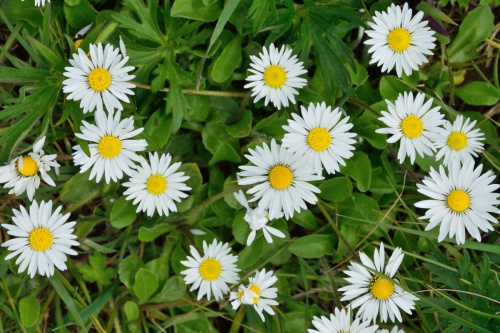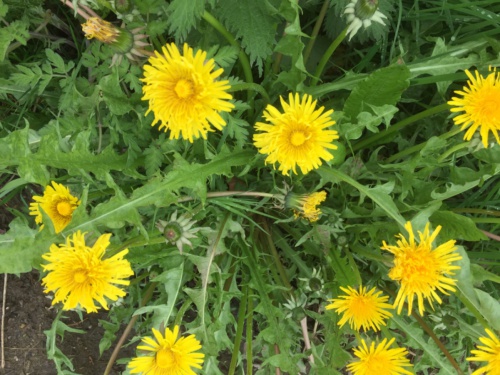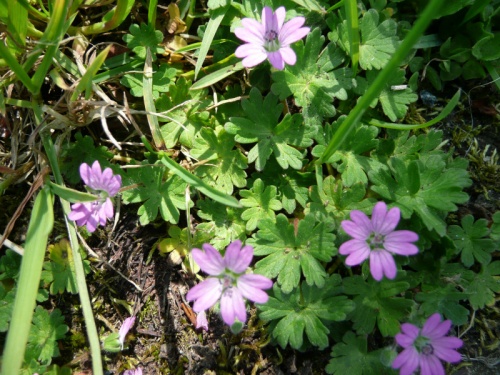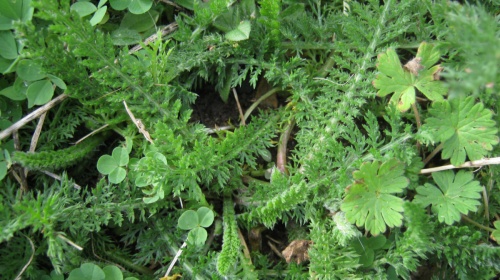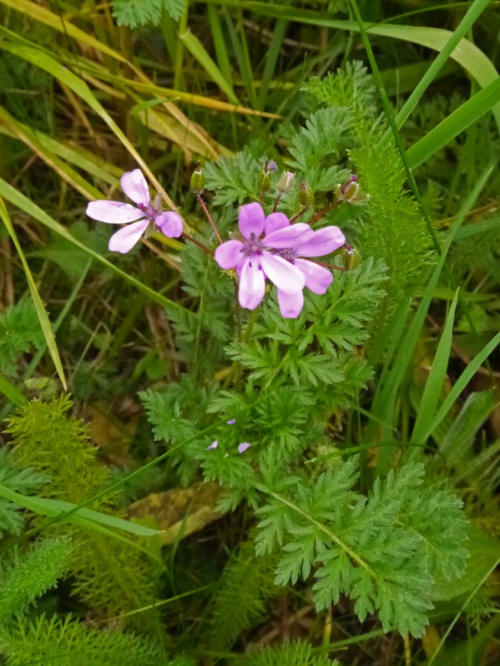
Though mown grassland has limited appeal to most wildlife, there are a few wildflowers that survive by being small or having leaves close to the ground. Providing the mowing isn't very short, some of these wildflowers can produce flowers on short stalks, or grow very quickly, to set seed. Others can reproduce vegetatively by sending out runners, or via spreading roots underground. Here are a few flowers to look out for. It is useful to learn to recognise the leaves as well as the flowers.
Even if you don't want to turn your lawn into a meadow, you can still help wildlife by mowing less frequently and not mowing too short. Having a mosaic of different height grassland looks attractive and offers different habitats to attract wildlife. See Plantlife's guidance on How to Make a Meadow.
Daisy
Familiar to most of us, the humble Daisy is the classic wildflower of short grass. It can flower every month of the year. Each 'flower' is in fact a composite of many, each white ray belonging to an individual flower.
How to ID: Spoon-shaped leaves in a basal rosette. Single flowers are yellow with white rays. Short: 2-3cm.
Where to see it: Lawns, short grassland.
Similar species: Other plants, such as Mayweed, have similar flowers but these are much taller and lack the rounded leaves in a basal rosette.
Lesser Trefoil
This common annual plant looks like a miniature clover. It flowers May-October. It is believed to be the plant that inspired the Irish Shamrock.
How to ID: Each leaf with 3 leaflets (clover-like) but very small. Lemon-yellow flowers 3-4mm, turning browner with age.
Where to see it: Lawns, verges, rough ground.
Similar species: Clovers have much larger leaves. Hop Trefoil has larger flowers heads and Black Medick leaves have a tiny point at the tip of each leaflet.
White Clover
This is a very useful plant for wildlife. Bees particularly feed on the white flowers and numerous insects feed on the leaves. Like all clovers, nodules on the roots take nitrogen from the air and convert it to nitrates, helping to fertilise the soil.
How to ID: Short growing. White, round flowers. Three round, hairless leaflets with fine teeth at the margins.
Where to see it: Grassland, verges, lawns.
Similar species: Red Clover has red flowers but also has hairy leaves and no teeth. (Red hair - White teeth!)
Dandelion agg.
The name Dandelion derives from the French 'dent de lion' (tooth of a lion), referring to the jagged leaf lobes. Dandelion flowers are one of the most important Spring nectar sources for bees and other pollinators.
How to ID: Basal rosette of leaves, typically with triangular lobes. Single flowers on each (hollow) stem. Bright yellow flowers and golf-ball sized seed 'clocks'.
Where to see it: Grassy places.
Similar species: Autumn Hawkbit has leaves with small finger-like lobes. Cat's-ear has wavy edged, hairy leaves.
Dove's-foot Crane's-bill
Our commonest native Geranium. It is an annual and has exploding pods to help distribute its seeds. The small pink flowers are popular with bees.
How to ID: Rounded leaves, divided around half-way into 5-7 wedges. Pink-purple flowers, 6-10mm, petals deeply notched. Stems with both long and short hairs.
Where to see it: Lawns, verges, disturbed ground.
Similar species: Other Geraniums. Small-flowered Crane's-bill has stems with only short hairs. Cut-leaved Crane's-bill has leaves divided nearly to the base.
Creeping Buttercup
The commonest of the 3 buttercup species found in meadows. It likes damp ground and is generally shorter than other buttercups.
How to ID: Typical yellow buttercup flower with sepals (under the petals) NOT pointing downwards. Three leaflets with the final lobe separated by a short stalk.
Where to see it: Grasslands, particularly when damp.
Similar species: Meadow Buttercup and Bulbous Buttercup.
Selfheal
This is one of the few plants that can flower in mown grass. It can grow taller but when mown it adapts by flowering on very short stalks.
How to ID: Low plant with paired, usually hairy, leaves. The flowers are deep violet blue, set into a wine-coloured cylinder-shaped head.
Where to see it: Lawns, verges, short grassland.
Similar species: None
Cat's-ear
Though flowering June-September, the leaves help to identify this plant at any time of year. Common on verges and in short grassland.
ID: Basal rosette of wavy-edged, pimply and hairy leaves. Yellow dandelion-like flowers on branched stalks.


Yarrow
Flowering July to October and common on verges and in meadows. The feathery leaves are distinctive.
ID: Feathery leaves and creamy-white dense flower-heads (can also be pinkish).

Common Stork's-bill
This plant appears to be getting more common on verges and short grassland. It flowers profusely and can turn the area pink! It gets its name from the long, pointed seed pods that protrude from the flower capsule.
How to ID: Low growing. Leaves finely divided. Flowers pink-purple, 7-18mm. The hairy seed pod 'beak' up to 40mm.
Where to see it: Short grassland, particularly on dry or sandy ground.
Similar species: Dove's-foot Crane's-bill also has pink flowers but has round, not feathery, leaves.


